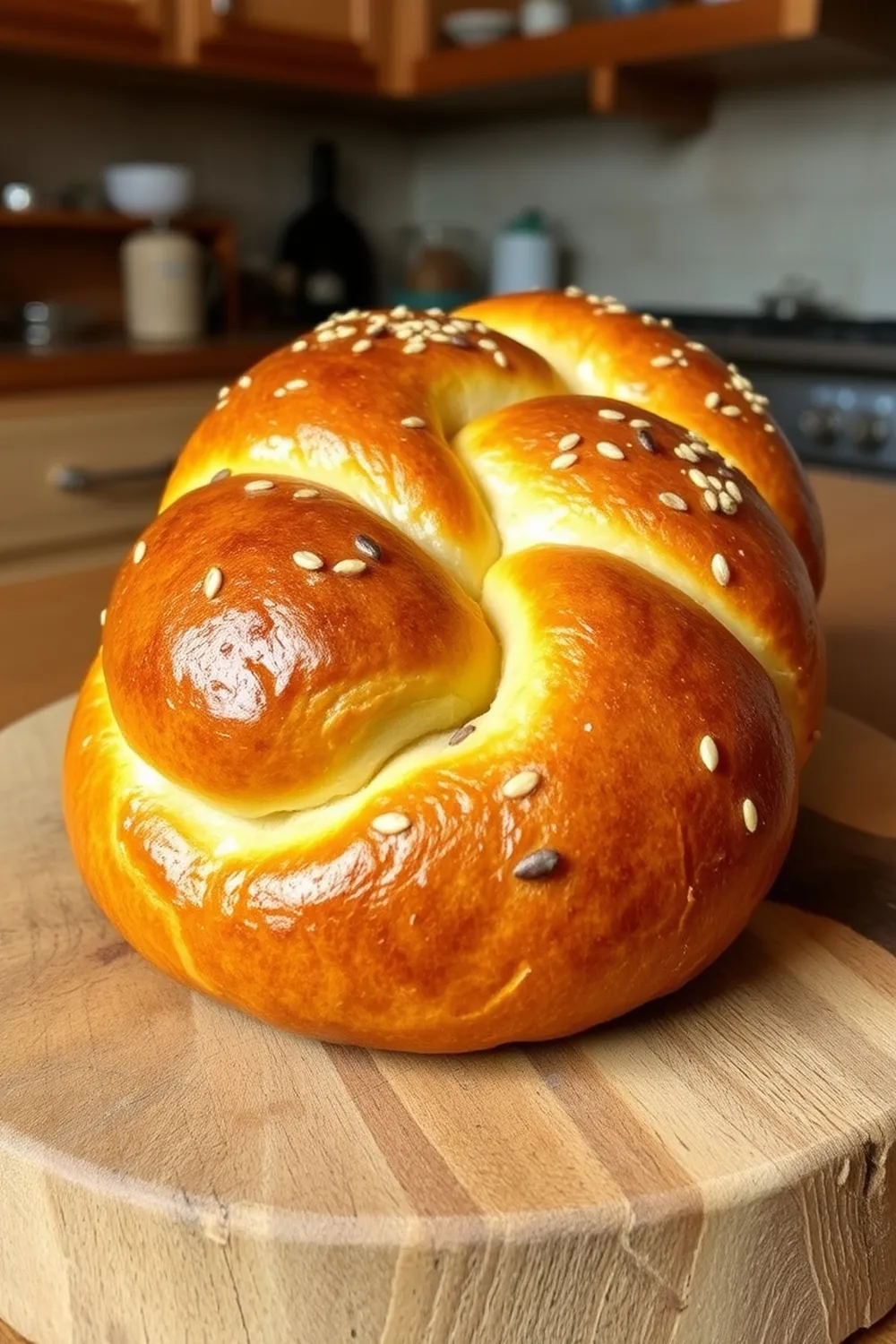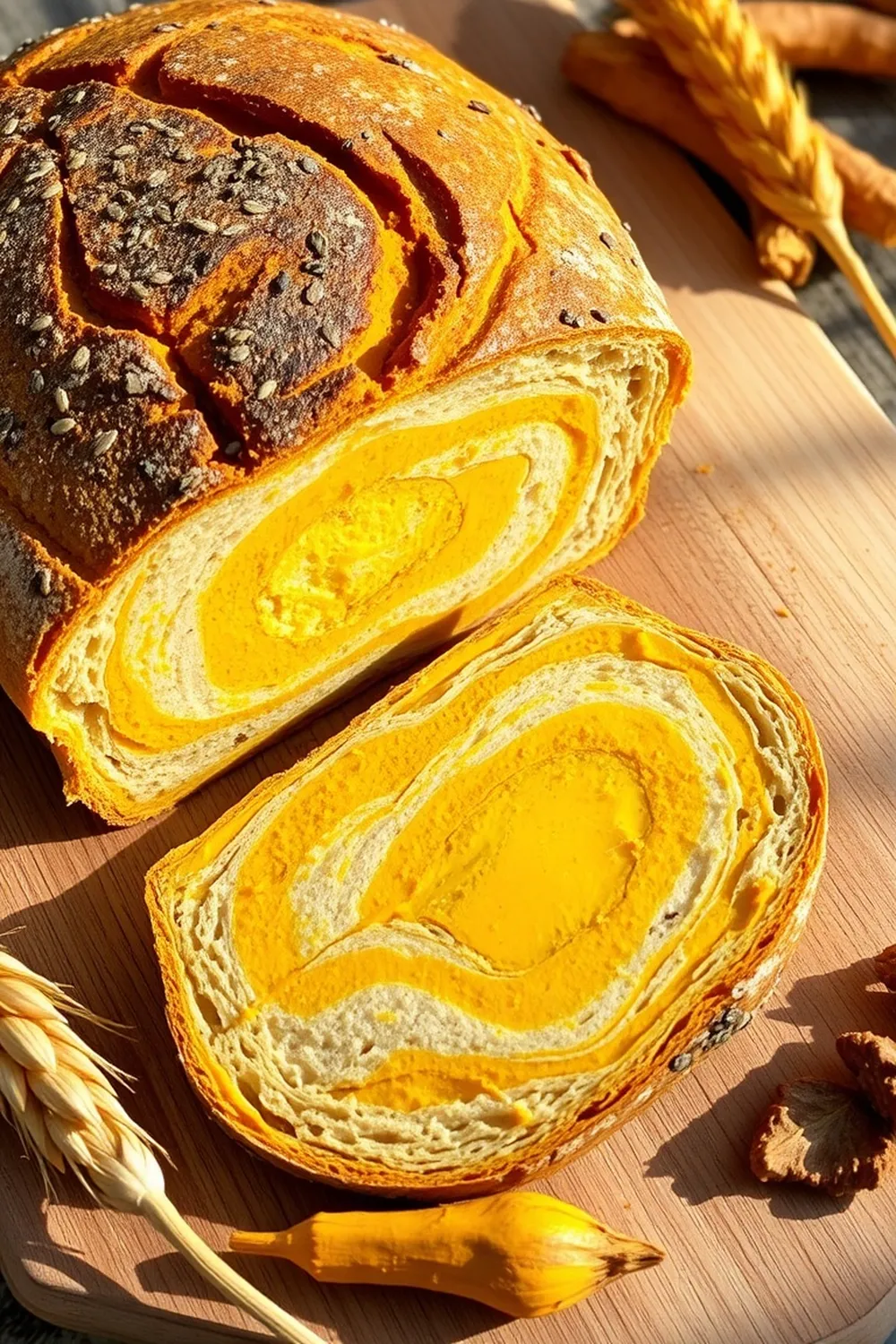- Combine flour, salt, and 1 tablespoon olive oil in a bowl. Gradually add water to form a soft dough.
- Knead dough for 8-10 minutes until smooth and elastic. Coat with 2 tablespoons oil, cover, and rest for 1 hour.
- Mix cumin, paprika, turmeric, and the remaining 1/4 cup oil in a small bowl to make spiced oil.
- Divide dough into 12 equal pieces. Roll each piece into a thin 9-inch round. Spread 1 teaspoon spiced oil over each round, then roll into a cylinder and coil into a spiral.
- Cover spirals with plastic wrap and let rest for 15-20 minutes. Then, roll each spiral into a 6-inch round.
- Cook each flatbread in a hot, lightly oiled skillet for 1-2 minutes per side, until golden brown and puffed. Serve warm.
- Calories:150 kcal25%
- Energy:627 kJ22%
- Protein:3 g28%
- Carbohydrates:22 mg40%
- Sugar:mg8%
- Salt:195 g25%
- Fat:6 g20%
Last Updated on 5 months ago by Neha Deshmukh
Whole Wheat Roti Recipe – Spiced Indian Flatbread with Atta
Introduction
There’s just something so comforting about a warm, soft roti fresh off the skillet, isn’t there? Growing up, the smell of roti cooking always meant family was gathering, and good conversation was about to happen. This whole wheat roti recipe is a staple in my kitchen, and I’m so excited to share it with you. It’s a little bit of effort, but trust me – the reward is so worth it. We’re making incredibly flavorful, spiced Indian flatbread using atta, and I’ll walk you through every step.
Why You’ll Love This Recipe
This isn’t just any roti recipe. We’re adding a vibrant spiced oil that takes these flatbreads to another level. They’re perfect with dal, sabzi, or even just a dollop of yogurt. Plus, using whole wheat flour (atta) makes them wonderfully nutritious. You’ll love how soft and pliable they become, and the subtle spice is just addictive!
Ingredients
Here’s what you’ll need to make these delicious rotis:
- 3 cup whole wheat flour (atta) – about 360g
- 1/6 cup whole wheat flour (atta) – about 30g (for dusting)
- 1 teaspoon salt
- 1/3 cup olive oil – about 80ml
- 1.25 cup water – about 300ml
- 1 teaspoon cumin powder
- 1 teaspoon paprika powder
- 0.25 teaspoon turmeric powder
Ingredient Notes
Let’s talk ingredients! A few little tips can make all the difference.
Whole Wheat Flour (Atta) – Types and Uses
Atta is the star of the show! It’s a whole wheat flour commonly used in Indian cooking. You can find different types of atta – fine, coarse, or a blend. I prefer a medium-fine atta for roti, as it gives a good balance of texture.
Olive Oil – Regional Variations & Substitutions
Olive oil adds a lovely flavor, but it’s not traditional. Traditionally, ghee or mustard oil are used. If you’re looking for a more authentic flavor, feel free to substitute! About the same quantity will work.
Spiced Oil Blend – The Heart of the Flavor
This is where the magic happens! Cumin, paprika, and turmeric create a warm, earthy flavor that complements the roti beautifully. Don’t skip this step – it really elevates the taste.
Water – Temperature & Impact on Dough
Lukewarm water is best for activating the gluten in the atta. It helps create a softer, more pliable dough. Avoid using very hot or cold water.
Salt – Enhancing Flavor
Salt isn’t just about seasoning; it also strengthens the gluten, giving your roti a better texture.
Step-By-Step Instructions
Alright, let’s get cooking!
- First, in a large bowl, combine the 3 cups of atta and salt. Add 1 tablespoon of olive oil.
- Gradually add the water, mixing with your hands until a soft dough forms. It should come together, but not be sticky.
- Now for the kneading! Turn the dough out onto a lightly floured surface and knead for about 15 minutes. This is a workout, but it’s crucial for developing the gluten and getting that perfect texture.
- Once the dough is smooth and elastic, coat it with the remaining 2 tablespoons of olive oil. Cover with plastic wrap or a damp cloth and let it rest for at least an hour. This allows the gluten to relax, making the roti easier to roll.
- While the dough rests, let’s make the spiced oil. In a small bowl, mix together the cumin, paprika, turmeric, and remaining 1/3 cup olive oil.
- Divide the dough into 12 equal pieces. Roll each piece into a thin, 9-inch round.
- Spread about 1 teaspoon of the spiced oil evenly over each round. Then, roll it up tightly into a cylinder and coil it into a spiral.
- Cover the spirals with plastic wrap and let them rest for another 15-20 minutes. This helps them relax and makes rolling easier.
- Now, gently roll each spiral into a 6-inch round.
- Heat a skillet (cast iron is ideal!) over medium-high heat. Cook each roti for about 1.5 minutes per side, until golden brown and puffed up.
Expert Tips
A few things I’ve learned over the years…
Kneading the Dough for Perfect Texture
Don’t skimp on the kneading! It’s the key to soft rotis. If you have a stand mixer, you can use the dough hook for about 8-10 minutes.
Achieving the Right Dough Consistency
The dough should be soft and pliable, but not sticky. If it’s too sticky, add a little more atta, one tablespoon at a time. If it’s too dry, add a little more water, one teaspoon at a time.
Rolling Technique for Even Rotis
Apply even pressure when rolling to ensure the roti is uniform in thickness. A little practice makes perfect!
Cooking Roti to Puffy Perfection
A hot skillet is essential for getting that beautiful puff. You can also lightly wet the back of the roti before placing it on the skillet – this helps create steam and encourages puffing.
Variations
Let’s get creative!
Vegan Roti
This recipe is already vegan if you use olive oil instead of ghee!
Gluten-Free Roti (Using Alternative Flours)
For a gluten-free version, try using a gluten-free atta blend or a mix of rice flour, sorghum flour, and tapioca starch. You may need to adjust the water quantity.
Spice Level Adjustment – Mild to Spicy
Adjust the amount of paprika and cumin to your liking. A pinch of chili powder can also add some heat.
Festival Adaptations – Roti for Special Occasions
During festivals, we sometimes add a little bit of ghee and a sprinkle of sugar to the dough for a slightly richer flavor.
Serving Suggestions
Roti is incredibly versatile! Serve it with:
- Dal (lentil soup)
- Sabzi (vegetable curry)
- Chole (chickpea curry)
- Yogurt
- Pickles
Storage Instructions
Leftover roti can be stored in an airtight container at room temperature for up to 2 days, or in the refrigerator for up to a week. Reheat on a skillet or in the microwave.
FAQs
Got questions? I’ve got answers!
What is the best way to store leftover roti?
Wrap them individually in foil or plastic wrap to prevent them from drying out.
Can I make the dough ahead of time?
Absolutely! You can make the dough a day in advance and store it in the refrigerator. Just bring it to room temperature before rolling.
What type of skillet is best for cooking roti?
A cast iron skillet is ideal because it retains heat well. But a heavy-bottomed non-stick skillet will also work.
How can I tell if the roti is cooked properly?
The roti should be golden brown with a few puffed-up spots. It should also be pliable and slightly soft to the touch.
Can I use ghee instead of olive oil?
Yes, absolutely! Ghee adds a wonderful flavor and is a traditional ingredient in roti.










